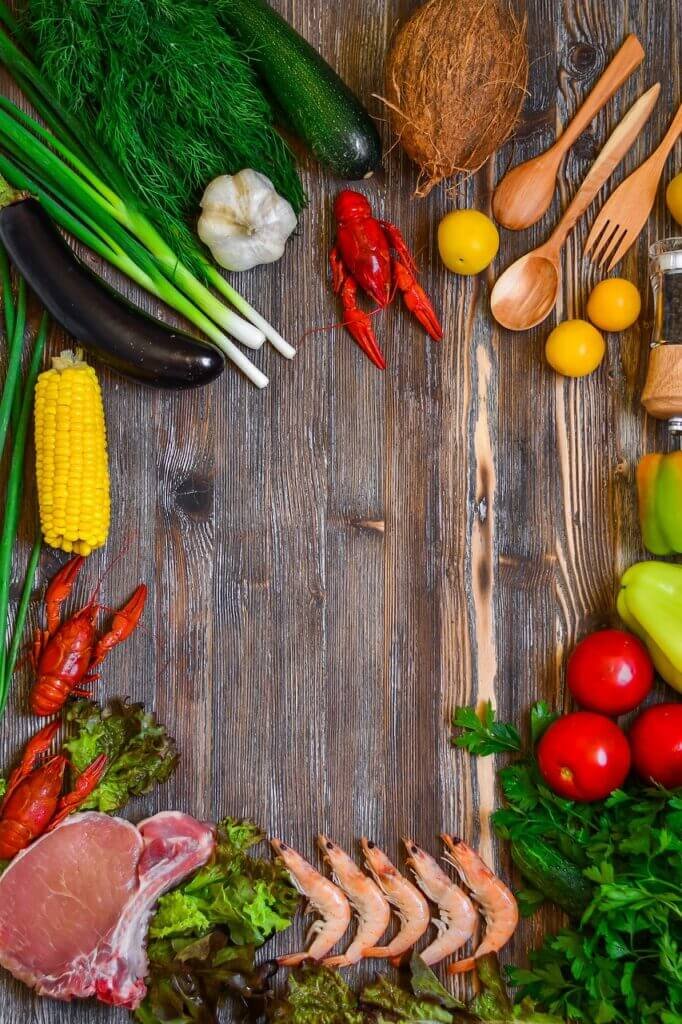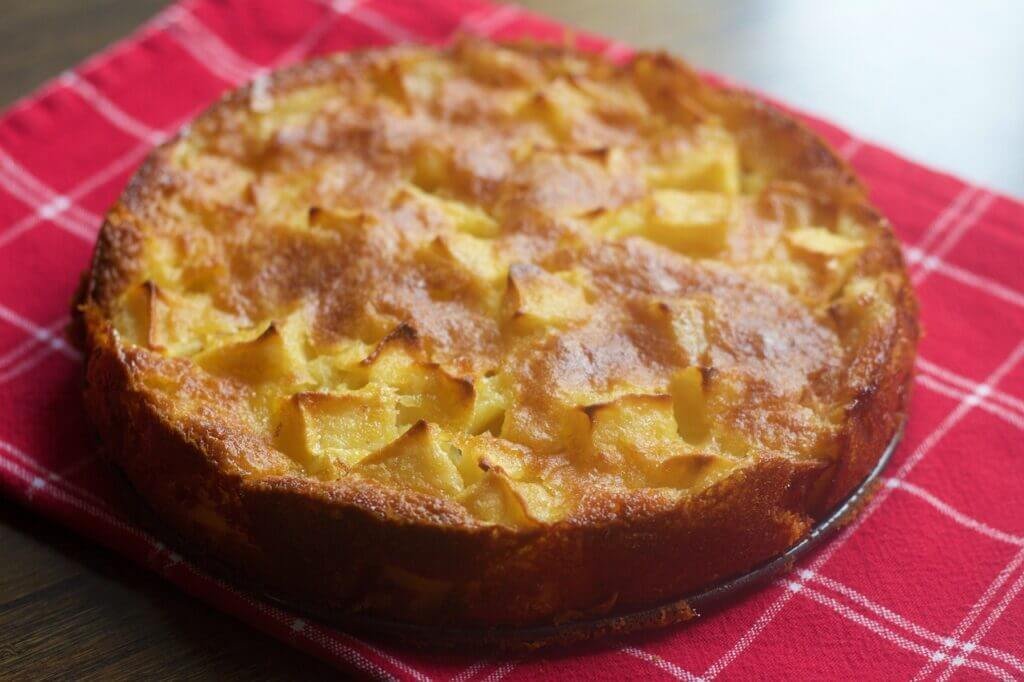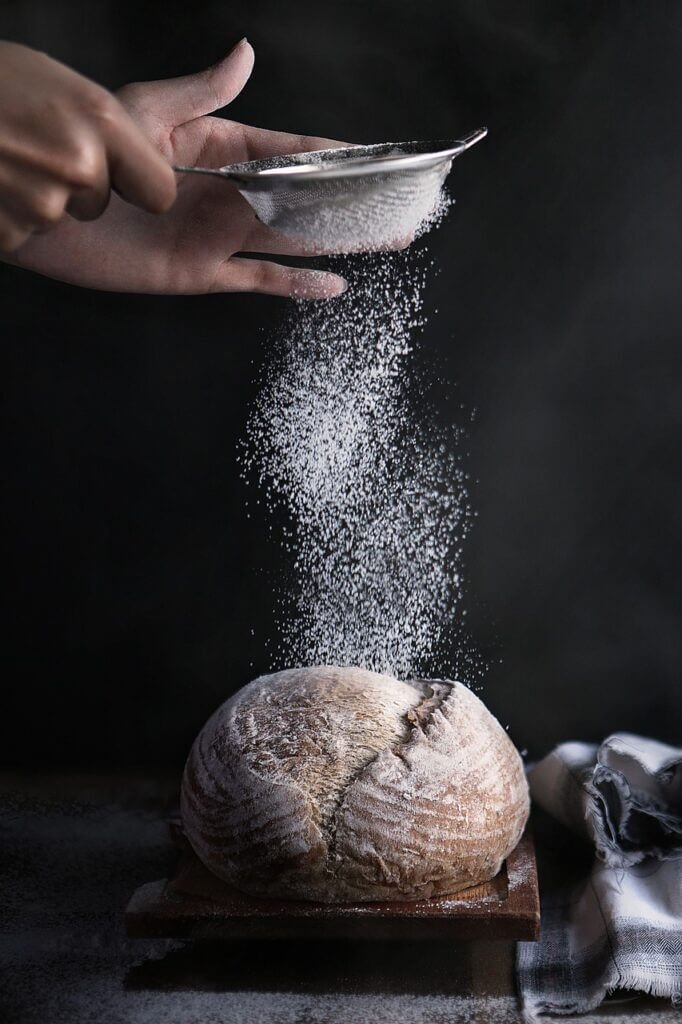If you’re longing to create a pie with a tender and flavorful filling, look no further! In this article, we will explore the steps you need to take to achieve that perfect pie filling. Whether you’re a seasoned baker or just starting out, you’ll discover tips and tricks that will ensure your pie turns out just right. From choosing the right ingredients to mastering the art of cooking and seasoning, we’ve got you covered. So grab your apron, dust off your rolling pin, and get ready to impress your friends and family with the most delicious pie filling they’ve ever tasted. Let’s get started!

Choosing the Perfect Fruits
When it comes to making a delicious pie filling, selecting the perfect fruits is paramount. You want to choose fruits that are ripe and fresh, as they will provide the best flavor and texture to your pie. Look for fruits with vibrant colors and a sweet aroma, indicating that they are at the peak of ripeness. Additionally, consider the type of pie you’re making and the flavor profile you’re going for. Some popular choices for pie fillings include apples, berries, peaches, and cherries.
Selecting Ripe and Fresh Fruits
To ensure you’re using the best ingredients for your pie filling, it’s important to know how to select ripe and fresh fruits. For apples or pears, gently press the skin near the stem – it should give slightly, indicating ripeness. Berries should be plump, firm, and free from mold or bruises. When selecting peaches, nectarines, or plums, give them a gentle squeeze – they should yield slightly without being too soft. For cherries, look for deep, glossy colors and stems that are still attached.
Matching Fruit Flavors
Creating a harmonious blend of fruit flavors is essential in making an exceptional pie filling. Consider combining fruits with complementary flavors to enhance the overall taste. For example, mix tart apples with sweet berries or peaches to balance the sweetness. If you want a more complex flavor profile, experiment with combining different types of fruits, such as apples and cranberries or peaches and blueberries. Don’t be afraid to get creative and discover unique flavor combinations that tantalize your taste buds.
Preparing the Fruits
Preparing the fruits before incorporating them into your pie filling is an essential step that can affect both the taste and texture of your pie. Start by washing the fruits thoroughly to remove any dirt or residue. For fruits with thick or tough skins, like apples or peaches, consider peeling them to ensure a smoother consistency. Next, remove any pits, seeds, or cores that may affect the texture of your filling. Finally, slice or chop the fruits to your desired size, taking into account whether you prefer larger fruit pieces or a more finely diced filling.
Washing and Peeling the Fruits
To ensure your pie filling is clean and free from any potential contaminants, it’s essential to wash the fruits before using them. Gently rinse the fruits under cool, running water, removing any dirt or debris. For fruits with tough or thick skins, like apples or peaches, consider peeling them. Use a sharp knife or a vegetable peeler to remove the skin, aiming for a more uniform and smooth filling.
Removing Pits, Seeds, and Cores
When it comes to certain fruits like cherries, apples, or peaches, it’s necessary to remove pits, seeds, and cores before incorporating them into your pie filling. Pits and seeds can be tough and detract from the overall texture of the filling, so it’s important to remove them. Slice the fruits in half and use a knife or your fingers to carefully remove the pits or seeds. Additionally, for fruits like apples, be sure to remove the core as well, as it can be tough and add unwanted texture to the filling.
Slicing or Chopping the Fruits
The size and shape of the fruit pieces in your pie filling can greatly impact the texture and overall eating experience. Consider how you want your pie filling to feel in your mouth – do you prefer larger, more substantial fruit chunks, or a more finely diced filling? Use a sharp knife and a sturdy cutting board to carefully slice or chop the fruits to your desired size. Keep in mind that smaller pieces will distribute the fruit flavors more evenly in each bite, while larger pieces may offer a more substantial texture.
Enhancing the Flavor
Taking your pie filling from good to great involves adding layers of flavor that will tantalize your taste buds. Experiment with various spices and herbs to give your filling a unique twist. Cinnamon, nutmeg, and ginger are classic choices that pair well with a variety of fruits. Alternatively, you can incorporate citrus zest or juice to brighten the flavors and add a refreshing tang. Finally, consider incorporating extracts or liqueurs that complement the fruit flavors, such as almond extract with cherries or amaretto with peaches.

Adding Spices and Herbs
Spices and herbs can elevate your pie filling, adding depth and warmth to the overall flavor. Consider using spices like cinnamon, nutmeg, or ginger, which pair well with a wide range of fruits. Sprinkle them directly onto the fruit or mix them with the sweetener to evenly distribute the flavors. Additionally, herbs like thyme or rosemary can provide a unique and savory twist to certain fruit fillings, such as apple or pear pies. Be cautious not to overpower the fruit flavors, but rather enhance them with a subtle touch of herbs.
Using Citrus Zest or Juice
One way to add a burst of freshness and tanginess to your pie filling is by incorporating citrus zest or juice. Zesting the outer layer of a lemon or orange adds fragrant oils that infuse the filling with vibrant flavors. Simply grate the zest using a microplane or fine grater. Additionally, freshly squeezed citrus juice can brighten the fruit flavors and balance out the sweetness. Add a splash of lemon or lime juice when mixing the fruits to awaken the taste buds and create a more complex flavor profile.
Incorporating Extracts or Liqueurs
To enhance the flavors of your pie filling even further, consider incorporating extracts or liqueurs that complement the fruit of your choice. Almond extract adds a lovely nutty note that pairs exceptionally well with cherries or peaches. Vanilla extract provides a rich and warm flavor that complements a wide variety of fruits. Alternatively, consider adding a small amount of liqueur, such as amaretto, rum, or Grand Marnier, to add depth and complexity to your pie filling. Aim for subtle hints of these flavors, as they should enhance rather than overpower the natural taste of the fruits.
Sweetening the Filling
Choosing the right sweetener for your pie filling is crucial, as it can greatly impact the overall taste and balance of flavors. Consider the type of fruit you’re using, its natural sweetness, and the desired sweetness level for your pie. Some common sweeteners for pie fillings include granulated sugar, brown sugar, honey, maple syrup, or agave syrup. Each sweetener adds its own distinct flavor and sweetness, so choose based on your preferences and the flavors you want to highlight in your pie.
Choosing the Right Sweetener
There are various sweeteners to choose from when making a pie filling, each with its own unique characteristics. Granulated sugar is a versatile and commonly used option, adding sweetness without overpowering the fruit flavors. Brown sugar offers a deeper, molasses-like flavor that pairs well with apples or pears. Honey and maple syrup provide a natural sweetness and distinct taste that can enhance certain fruit fillings. Agave syrup is a popular alternative for those seeking a lower-glycemic option. Consider the flavor profile you’re going for and choose the sweetener that best complements your fruit selection.
Determining the Appropriate Sweetness Level
Achieving the perfect balance of sweetness in your pie filling is essential. The appropriate sweetness level will depend on personal preference, the natural sweetness of the fruits, and the other flavor elements in your pie. Taste your fruit mixture before adding the sweetener and use it as a guide. Add the sweetener gradually, tasting as you go until it reaches the desired level of sweetness. Remember that some sweetness will be lost during the cooking process, so it’s better to slightly under-sweeten the filling.
Balancing Sweetness and Tartness
Finding the right balance between sweetness and tartness is key to creating a well-rounded pie filling. Some fruits, like apples or berries, naturally have a tartness that can be tempered with the right amount of sweetener. If your filling tastes overly tart, gradually increase the sweetness. Conversely, if the filling is too sweet, consider adding a small amount of lemon juice or reducing the sweetener. Aim for a harmonious balance that allows both the natural flavors of the fruit and the added sweetness to shine through.
Creating a Binder
A binder is crucial in pie fillings as it helps hold everything together and provides a desirable consistency. There are different options to consider when it comes to creating a binder for your filling, such as thickeners like flour or cornstarch, tapioca or arrowroot, or even making a fruit purée.

Using Thickeners such as Flour or Cornstarch
One common method to create a binder in pie fillings is by using thickeners like flour or cornstarch. These ingredients help absorb excess moisture and give the filling a thicker, more cohesive texture. To use flour or cornstarch, mix a small amount with water to create a slurry, then gradually add it to the fruit mixture while gently stirring. The slurry will thicken as it cooks, bringing the pie filling to the desired consistency. Remember to use the recommended amount of thickener for the specific fruit and filling recipe you’re using.
Utilizing Tapioca or Arrowroot
For those looking for a gluten-free alternative to thicken their pie filling, tapioca or arrowroot can be excellent choices. Tapioca starch is derived from the cassava plant and adds a glossy texture to the filling without altering the taste. Arrowroot powder, obtained from the arrowroot plant, has similar properties and can be used as a thickening agent in pie fillings. Both tapioca and arrowroot should be used in the appropriate ratio recommended for the specific fruits you’re working with, ensuring a smooth and thick filling.
Making a Fruit Purée
An alternative way to create a binder for your pie filling is by making a fruit purée. This method works especially well for fruits that release a lot of juices when cooked, such as berries or stone fruits. Blend a portion of the fruits in a food processor or blender until smooth and then mix it back into the remaining sliced or chopped fruit. The fruit purée acts as a natural binder, thickening the filling and helping to marry the flavors together. This technique not only adds a lovely texture but also intensifies the fruit flavors throughout the filling.
Balancing the Acidity
Acidity can greatly affect the overall taste of your pie filling, and striking the right balance is crucial. By using ingredients with acidity, such as lemon or lime juice or a small amount of vinegar, you can enhance the flavors of the fruits and add brightness to your filling.
Adding Lemon or Lime Juice
Lemon or lime juice can add a delightful tanginess to your pie filling while balancing the sweetness. The juice of these citrus fruits contains natural acids that help highlight the flavors and cut through any potential cloying sweetness. Add a squeeze of fresh lemon or lime juice to your fruit mixture while mixing to brighten the flavors and create a more complex taste profile. Start with a small amount and adjust based on your preferences and the specific fruits you’re using.
Incorporating a Small Amount of Vinegar
If you prefer a more subtle acidity in your pie filling, consider using a small amount of vinegar, such as apple cider or white vinegar. Vinegar adds a subtle tang without overpowering the flavors of the fruits. Use no more than a teaspoon of vinegar per pie filling, gradually adding it and tasting as you go. It’s important to note that vinegar should be used sparingly to avoid an overly acidic or sour tasting filling. Balance is key to ensure the acidity complements the sweetness and enhances the overall taste.
Adjusting the Acidity Based on the Fruit
Different fruits have varying levels of natural acidity, so it’s important to consider this when adjusting the acidity of your pie filling. Fruits like citrus, berries, or tart apples already have a built-in acidity, so be mindful when adding additional acids. Conversely, sweet and milder fruits, such as peaches or pears, may benefit from a touch of acidity to brighten their flavors. Taste your fruit mixture before and after adding acidity to achieve the desired balance. It’s all about finding the perfect harmony between the natural fruit flavors and the added acidity.
Adding Texture and Body
Adding texture and body to your pie filling can take it from ordinary to extraordinary. Consider incorporating fruit chunks or pieces, mixing in nuts or dried fruits, or using a combination of soft and firm fruits. These elements will add layers of complexity and create a more interesting eating experience.

Including Fruit Chunks or Pieces
To add a delightful burst of fruitiness and texture to your pie filling, consider including fruit chunks or pieces. Set aside a portion of the sliced or chopped fruit and gently fold it into the filling mixture at the end. The larger, intact fruit pieces will maintain their shape during cooking and provide a pleasant surprise with every bite. This technique works particularly well with fruits like apples, peaches, or cherries, as their textures hold up beautifully in pies.
Mixing in Nuts or Dried Fruits
For those craving additional texture and flavor in their pie filling, consider mixing in nuts or dried fruits. Chopped nuts, such as walnuts or pecans, can add a satisfying crunch to the filling and complement certain fruit flavors. Dried fruits, like cranberries, raisins, or apricots, can provide bursts of sweetness and chewiness throughout the filling. Be mindful of the fruit-to-nut or fruit-to-dried fruit ratio and adjust accordingly based on personal preference and the desired outcome.
Using a Combination of Soft and Firm Fruits
Mixing soft and firm fruits together in your pie filling can create a pleasing contrast of textures. Softer fruits, such as peaches or berries, tend to break down more readily when cooked, adding juiciness and richness to the filling. Combining them with firm fruits, like apples or pears, will provide a more varied texture and a nice balance between tenderness and firmness. Experiment with different combinations of fruits to find the perfect balance that suits your taste and creates a unique sensory experience.
Combining the Ingredients
Once you’ve prepared and enhanced your fruits, it’s time to bring all the ingredients together to create the perfect pie filling. Properly combining the fruits, sweetener, flavor enhancers, binder, and other ingredients will ensure a cohesive filling that bakes evenly and packs a punch of flavor.
Mixing the Fruits with the Sweetener
To ensure that the sweetness is evenly distributed throughout the fruit mixture, start by combining the fruits with the chosen sweetener. Toss the sliced or chopped fruits with the sweetener in a large bowl and gently mix them together, ensuring that each piece is coated. This step allows the sweetener to begin macerating the fruits, extracting their juices, and creating a flavorful syrup that will meld well with the other ingredients.
Gently Folding in the Flavor Enhancers
After mixing the fruits with the sweetener, it’s time to add in the flavor enhancers, such as spices, herbs, citrus zest or juice, or extracts. Sprinkle or pour these ingredients over the fruit mixture, then gently fold them in. Use a spatula or wooden spoon to ensure even distribution, being careful not to mash or overmix the fruits. The goal is to add subtle hints of flavor that elevate the natural taste of the fruits without overpowering them.
Gradually Adding the Binder and Other Ingredients
To create a pie filling that holds its shape and has the desired consistency, gradually incorporate the binder and any other additional ingredients, such as nuts or dried fruits. If using a thickener like flour or cornstarch, mix a small amount with water to create a slurry. Pour the slurry into the fruit mixture while gently stirring, ensuring that it is evenly distributed. If using tapioca or arrowroot, sprinkle the appropriate amount evenly over the fruit mixture and gently mix. Finally, add any nuts or dried fruits and fold them in gently. Take your time during this step to ensure all the ingredients are well blended and harmoniously incorporated.
Cooking the Filling
Once your pie filling is mixed and ready to go, it’s time to cook it to perfection. The cooking method will depend on your recipe and the specific type of fruit you’re using. However, whether you simmer the filling on the stovetop or bake it with the pie, it’s crucial to monitor the cooking time to achieve the ideal texture and doneness.
Simmering the Filling on the Stovetop
For certain fruit fillings, such as those with berries or stone fruits, simmering the filling on the stovetop can help break down and soften the fruits while allowing the flavors to meld together. Add the mixed filling to a saucepan over medium heat and stir frequently to prevent sticking or burning. As the filling simmers, the fruits will release their juices, and the flavors will intensify. Cook until the filling reaches the desired thickness and consistency, usually about 10-15 minutes. Remove from heat and allow it to cool slightly before using in your pie.
Baking the Pie with the Filling
For other fruit fillings, baking the pie with the filling is the traditional method that brings out the best flavors and textures. After placing the filling mixture in the pie crust, cover it with a top crust or lattice and bake according to your pie recipe instructions. The heat from the oven will cook the fruits, allowing them to soften and release their juices, while the crust will brown and become wonderfully flaky. Pay attention to the baking time recommended for your specific pie recipe, as it may vary based on the fruits and other ingredients used.
Adjusting Cooking Time Based on Fruit Type
Different fruits have varying cooking times and behaviors, so it’s crucial to adjust the cooking time accordingly. Softer fruits, such as berries, peaches, or plums, will cook relatively quickly and might require less time in the oven compared to firmer fruits like apples or pears. Keep an eye on the pie while it bakes and start testing for doneness when the crust is golden brown. Insert a knife or toothpick into the filling, ensuring the fruits are soft and tender. Adjust the cooking time as needed to achieve the perfect balance between fully cooked fruits and a beautifully baked crust.
Allowing the Filling to Cool
Once your pie is cooked to perfection, it’s essential to allow the filling to cool before serving. Cooling allows the filling to set and firm up, making it easier to slice and preventing it from running out of the crust. Different types of fruit fillings may require different cooling techniques, so consider each option.
Letting the Filling Cool to Set
For certain fruit fillings, such as those with berries or stone fruits, it’s best to let the pie cool at room temperature to allow the filling to set naturally. As the pie cools, the natural pectin in the fruits will activate and help the filling solidify slightly. This cooling process will ensure that your pie holds its shape when sliced, resulting in a beautifully plated dessert.
Refrigerating for Better Texture
For fillings with softer fruits or those that have a higher moisture content, refrigerating the pie after cooling is a great way to achieve better texture and consistency. The cold temperature of the refrigerator will help the filling firm up further, making it easier to slice and serve. Additionally, some fruit fillings, like those with custard or cream, require refrigeration to set properly and avoid spoilage. Allow the pie to cool at room temperature before placing it in the refrigerator for a few hours or overnight, ensuring it’s well-covered to prevent any flavors from transferring.
Allowing Flavors to Meld Before Serving
Although it may be tempting to dig into your freshly baked pie immediately, allowing the flavors of the filling to meld and develop will result in a more harmonious taste. Similar to flavors in stews or soups that improve over time, pie fillings benefit from a resting period as well. The fruits and other ingredients have time to mingle and marry together, resulting in a richer and more complex flavor profile. Plan ahead and make your pie filling a day in advance, if possible, to give it time to develop its best taste. Serve the pie at room temperature or warm it slightly before indulging in the delightful flavors you’ve created.
In conclusion, making a tender and flavorful pie filling requires attention to detail, thoughtful ingredient selection, and careful execution. By choosing the perfect fruits, preparing them with care, enhancing the flavors, sweetening appropriately, creating a binder, balancing acidity, adding texture and body, combining the ingredients, cooking with precision, and allowing the filling to cool, you’ll be well on your way to creating pies that will delight your family and friends. So roll up your sleeves, gather your favorite fruits, and embark on a pie-making adventure that will leave everyone asking for seconds. Happy baking!


